|
|
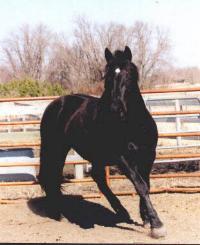 |
Spanish Mustangs:
Past, Present, Future, Perfect!
By Jane Greenwood, Secretary SMR |
PAST: When the Conquistadors arrived in
the Americas they brought with them some of Spain’s finest horses. They
also brought some of the toughest horses the world has ever produced. You all
know the story: The horses spread throughout the land through theft, gift and
their own cunning. By the late 1800’s hundreds of thousands of these
horses still roamed free, or in Indian herds. Some isolated herds still as pure
as the horses they descended from. However, the Government made a practice of
shooting herd stallions and then introducing domestic Thoroughbred, Morgan or
Draft stallions to “improve” these herds. Horses confiscated from
Indian tribes were often shot or infused with other domestic herds. The number
of pure horses left quickly dwindled. The Spanish Mustang was in danger of
losing its unique qualities to an equine melting pot.
| These are the historic horses who won the
west: Mounts of Native Americans, Lewis and Clark, Mexican Banditos, the Pony
Express and countless others who depended on their strong back and hardy
nature. The original Nez Perce Appaloosa was a Spanish Mustang, and the Quarter
Horse got his cow sense from this remarkable breed whose courage was born in
the bullrings of Spain. The Spanish Mustang had lost none of this legendary
brio; the Spanish horse left a legacy in the tough, beautiful and hardy
descendant who now called America home. They were now on the brink of
extinction. |
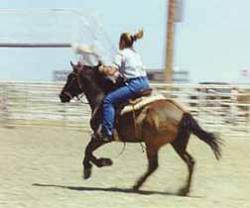 |
.jpg) |
Bob Brislawn was a man who had
made his own way at an early age, working on ranches, mining and freighting.
During his years in the West, his horses of choice were Spanish Mustangs. His
respect for these horses was enormous as they thrived on forage that could not
support other breeds and never seemed to tire. He rarely hobbled or tied his
horses in camp and said they would stay with him, much like his faithful dogs.
But most of all he was impressed with their speed and agility and above all,
their incredible will to survive. |
| As he roamed throughout the
West he realized that these horses were being methodically exterminated and he
commenced his search for horses of essentially pure Spanish blood, desiring to
preserve those few remaining. Thus began his life-long search for horses of
essentially pure Spanish blood. Traveling throughout the country, sometimes
with his family in tow, Brislawn sought to preserve these horses wherever they
could be found. Along with a handful of knowledgeable horsemen, he vowed to
save the few remaining examples of the straight Spanish horse |
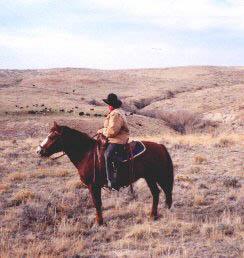 |
In 1925, he officially started his preservation
project with two full brothers; Buckshot and Ute sired by a buckskin stallion
named Monty and out of a Ute reservation mare. Monty, captured in 1927 in Utah,
escaped back to the wild in 1944, taking his mares with him. He was never
recaptured.
| But despite this
setback, Bob kept on. In 1957, spearheaded by Brislawn, the Spanish Mustang
Registry was incorporated in Oshoto, Wyoming. A non-profit organization it
began with only 20 horses, its goal: The preservation and perpetuation of the
true Spanish Mustang. |
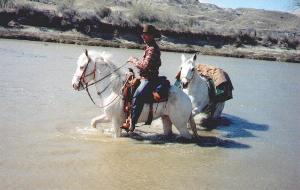 |
PRESENT: Today Brislawn’s vision
has been fulfilled: From 20 horses registered in 1957 to 3,000 registered in
2001. Perhaps half that number is still alive. While still considered a rare
breed by the American Rare Breeds Conservancy, the Spanish Mustang is now
assured its place in equine history. The Spanish Mustang is a colorful breed.
Their colors are extremely varied, the inheritance of the early Spanish Horses
who came in many colors and patterns. Spanish Mustangs can be found in colors
from appaloosa to zebra striped dun as well as grulla, buckskin, roan, paint,
palomino, cremello, ysabella, and perlino. And the more common colors of bay,
chestnut, black and white. All color patterns are accepted in the Registry with
the exception of Tobiano. Because of the many colors found in the horses they
are prominently featured in the popular book Horse Color by Dr. Phil
Sponenberg.
Foundation Stallion San Domingo SMR #4 was the
inspiration for Marguerite Henry’s “San Domingo: The Medicine Hat
Stallion. She and her illustrator, Robert Lougheed visited the Cayuse Ranch in
the 60’s and the books dedicated to “Mr. Mustang”, Bob Brislawn.
Today grandsons and granddaughters of this famous horse still live on the
original 3,000-acre Wyoming ranch.
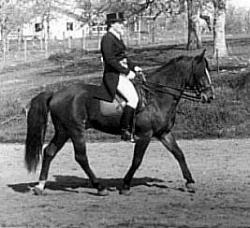 |
The Spanish Mustang is a medium
sized horse, ranging from 13 2 to 15 hands with an average size of about 14 2
with proportional weight. They are smooth muscled with short backs, rounded
rumps and low set tails. Coupling is smooth and the overall appearance is of a
well-balanced, smoothly built horse. The girth is deep, with well-laid back
shoulder and fairly pronounced withers. |
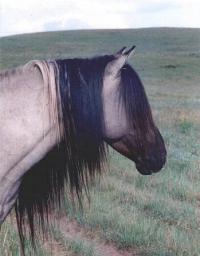 |
They possess the classic
Spanish type head with a straight or concave forehead and a convex nose which
is in contrast to the straight forehead and nose of most breeds. Ears are
medium to short, necks are fairly well crested in mares and geldings and
heavily crested in mature stallions. Chests are narrow but deep with the front
legs joining the chest in an "A" shape rather than straight across.
Chestnuts are small or missing altogether, particularly on the rear legs. Feet
are extremely sound with thick walls, many having what is typically known as a
"mule foot" which resists bruising due to the concave sole. Canons
are short, upper foreleg is long, with the canon bone having a larger
circumference than other breeds of comparable size and weight. |
Long-strided, many are gaited, with a
comfortable four bear gait such as the amble, running walk or single foot. Some
individuals are laterally gaited and do a very passable "paso" gait
though without extreme knee action. They are hardy animals and tend to be less
prone to injury, particularly of the legs and feet, than other breeds.
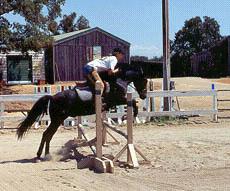 |
They have a very different
mentality than "domesticated" horses. The Spanish Mustang will rarely
allow itself to get into a dangerous situation. This would include any abusive
training scenario. They expect to be treated with respect and it is a respect
that must be earned by their trainer. A consistent characteristic of this breed
is a very high intelligence, making them horses that have an opinion and
sometimes that opinion is not in agreement with yours! Now you may find
yourself asking, “Why would anyone want one?” “Bold”,
“courageous”, “tough”, “the friendliest horse
I’ve ever owned”. |
 |
No where else will you find a
tougher horse more willing to give that extra bit of heart to a person
they’ve bonded to. One rancher, Don Bellis, in an article on the Spanish
Mustang in the Gillette, WY News-Record was quoted as saying; “When you
ride them, you can ride all day and feel like you haven’t done a thing.
They got a mile-eating trot. They take you across the country in that trot,
just like sitting in a chair. They can do
anything a Quarter Horse can do and you won’t beat them to death riding
them. I’m a born-and-raised Quarter Horse man. Now I’m getting rid of
my Quarter Horses and going to all mustangs.”
|
| Bellis went on to add,
“They got a real good personality, they bond up good. Treat that horse
like he was a pet and you got a friend for life. I’ve got an 8-year-old
grandson that rides our mustang bareback with just a halter.” |
.jpg) |
FUTURE: As the breed grows and becomes
more recognized in the equine world, more and more people are discovering what
a treasure the Spanish Mustang still is. Probably best suited for endurance or
competitive trail work, Spanish Mustangs are beginning to turn some heads. 2000
Winner of the coveted AERC Jim Jones Award, Geronimo’s Warrior SMR #2006,
won with over 2,200 miles all in 50 and 100-mile rides. The next place horse
followed with less than a thousand miles.
| Because of their short backs
and powerful hindquarters these horses do very well in advanced dressage
movements, however their short stature usually put them at a disadvantage in
the show ring. However many are being used as pony club mounts, as their
sensible disposition keeps them manageable and their athletic abilities keeps
them in the ribbons. |
.gif) |
Spanish Mustangs are also playing polo;
reining, running poles and barrels and keeping up with horses a lot larger than
they are, proving bigger is not necessarily better.
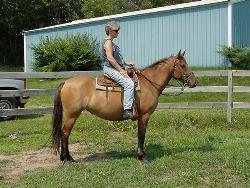 |
Emmett Brislawn, his wife,
Gioja, and daughter, Josie, will continue to breed fine Spanish Mustangs on the
homestead of Emmett’s father, Bob. The ranch in Oshoto, Wyoming boasts a
view of Devil’s Tower from the backside of the 3,000-acre ranch. Watching
the herds of mustangs running across this Wyoming landscape, like their
ancestors did hundreds of years ago makes a person proud to be a small part of
it. Spanish Mustang breeders can be found across the country. Each of them
making their own contribution to Bob Brislawn’s dream: The preservation
and perpetuation of the pure Spanish Mustang. |
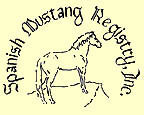 |
For more information on the SMR
or to find a breeder near you, please visit our web site at
www.spanishmustang.org
Or contact:
The Spanish Mustang Registry
11790 Halstad Avenue
Lonsdale MN 55046
507-744-2704
|
|

